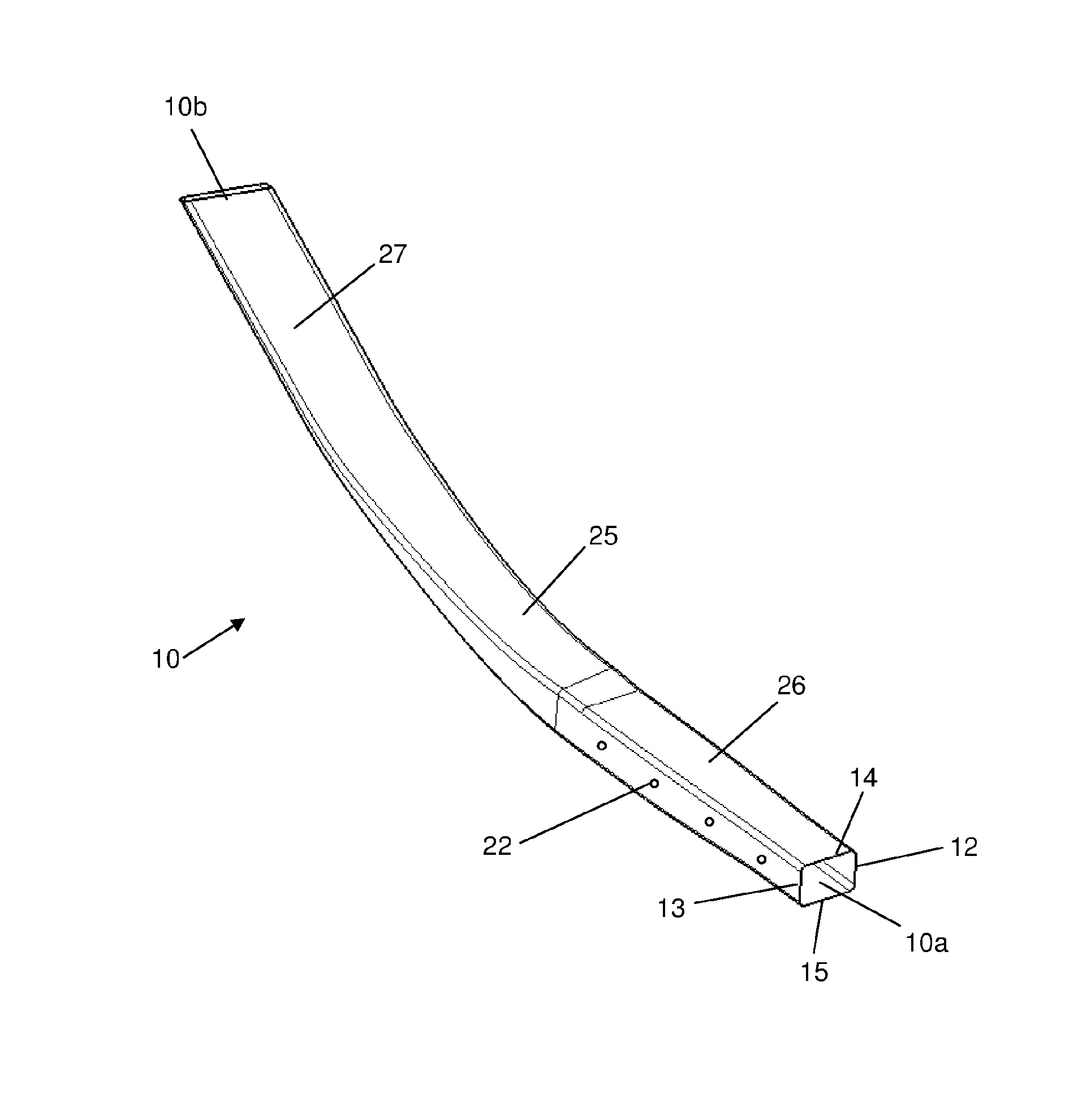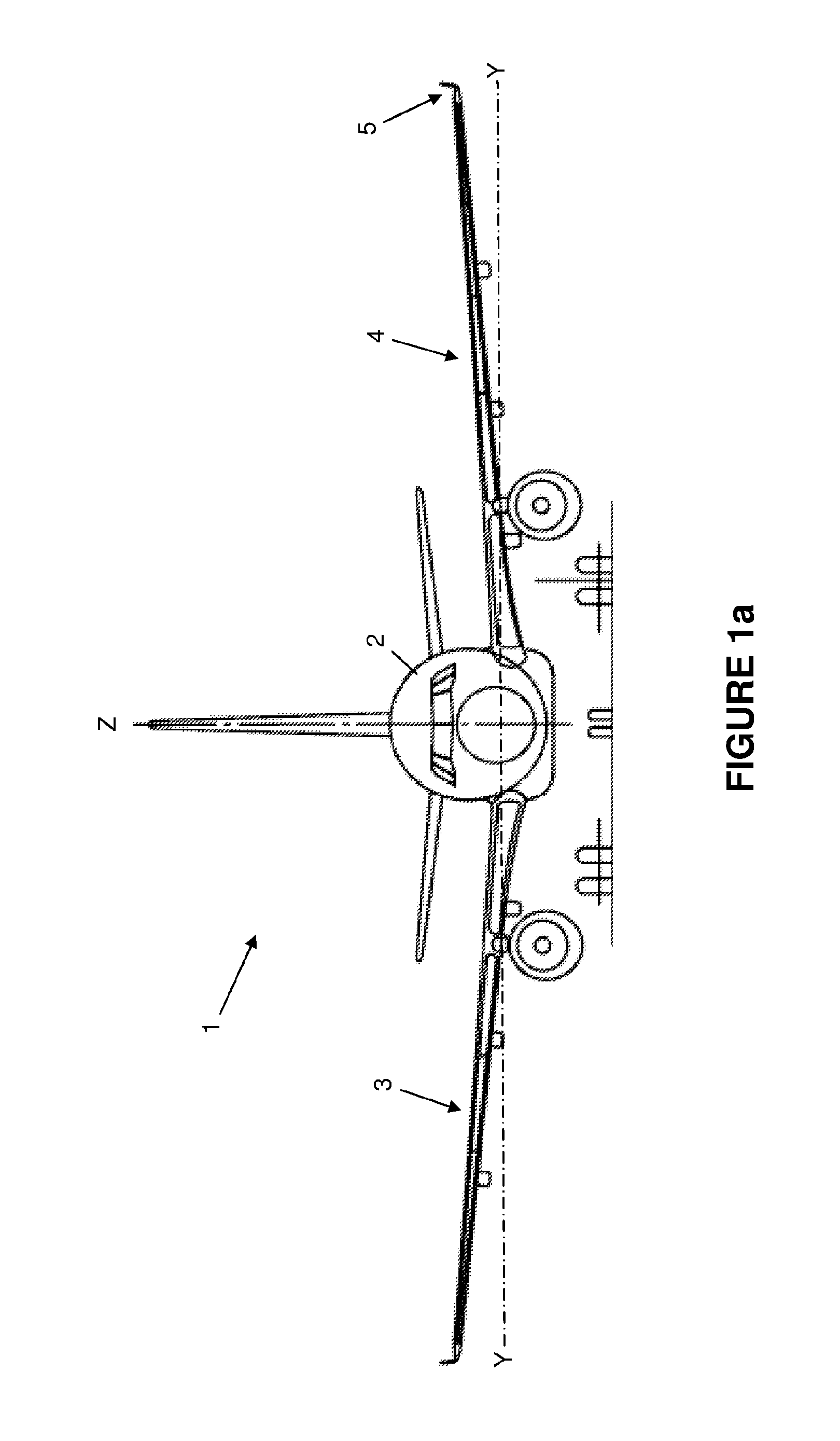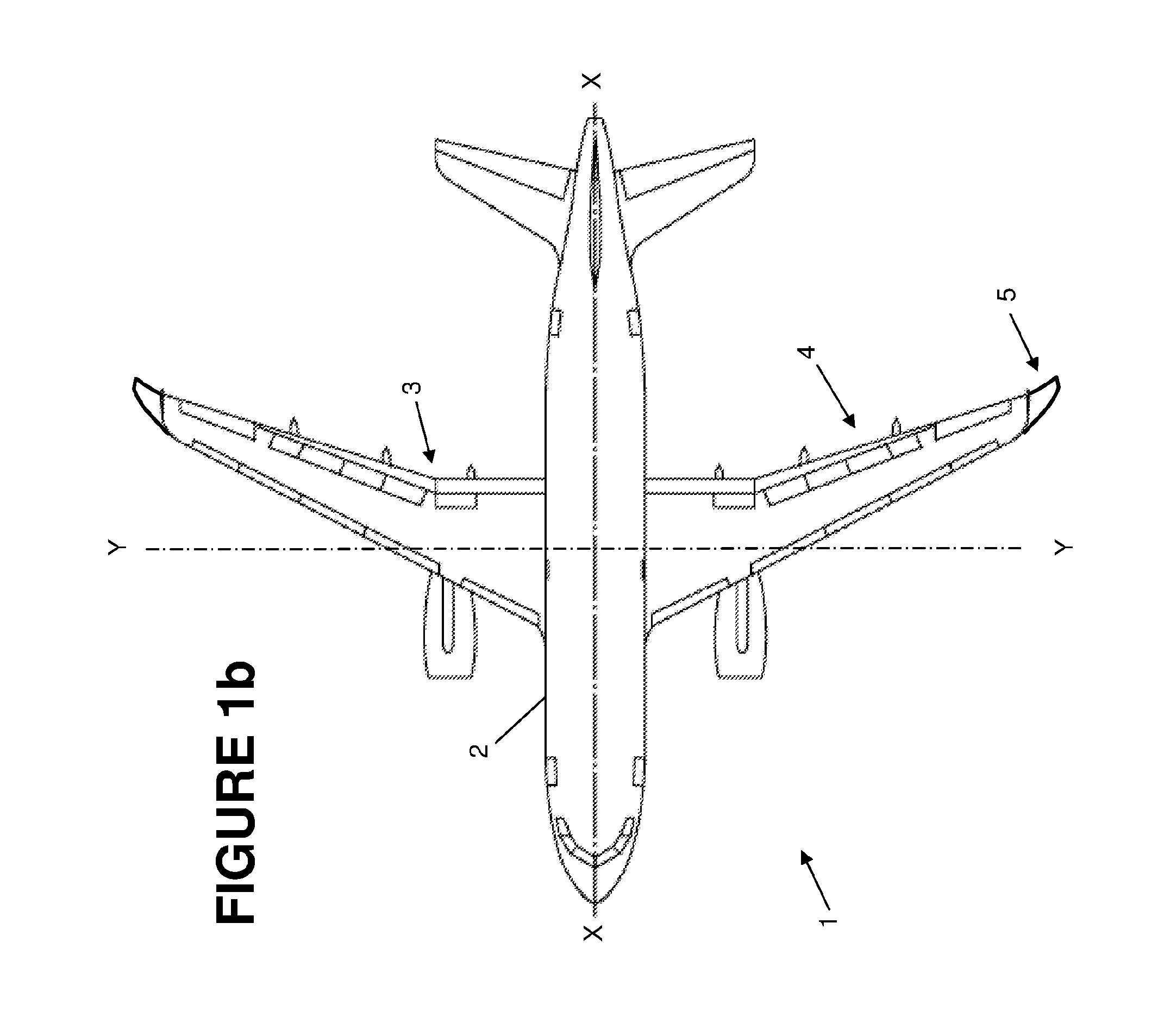Braided composite spar
a composite material and spar technology, applied in the direction of spars/stringers, air-flow influencers, applications, etc., can solve the problems of difficult manufacturing and construction of composite materials, difficult to adequately tailor the structural behaviour of composite beams, and wing tip devices that are overengineered, etc., to achieve the effect of reducing the height of the spar or preform
- Summary
- Abstract
- Description
- Claims
- Application Information
AI Technical Summary
Benefits of technology
Problems solved by technology
Method used
Image
Examples
Embodiment Construction
)
[0053]FIGS. 1a and 1b show an aircraft 1 with a fuselage 2 carrying a pair of wings 3,4.
[0054]The aircraft has a horizontal fore / aft axis (labelled X) and a horizontal inboard / outboard axis (labelled Y) normal to the fore / aft axis. Each wing has a winglet and the winglet 5 at the tip of the port wing 4 is shown in FIG. 1c. The port wing 4 comprises a main wing element 6 with a tip 7, and a winglet 5 attached to the tip. The main wing element 6 has front and rear spars running along its full span from a root near the fuselage 2 to its tip 7. Only the webs 8,9 of these spars are shown in FIG. 1 but they also have spar caps which could point in (towards the other spar) or out. A fuel tank is housed in the main wing element 6 between the spar webs 8,9.
[0055]The winglet 5 has a main (rear) spar 10 and a front spar 11. The main spar 10 extends from a root 10a to a tip 10b which is short of a tip 5a of the winglet 5 so it does not run along the full span of the winglet. The front spar 11 ...
PUM
| Property | Measurement | Unit |
|---|---|---|
| fibre angle | aaaaa | aaaaa |
| fibre angle | aaaaa | aaaaa |
| thickness | aaaaa | aaaaa |
Abstract
Description
Claims
Application Information
 Login to View More
Login to View More - R&D
- Intellectual Property
- Life Sciences
- Materials
- Tech Scout
- Unparalleled Data Quality
- Higher Quality Content
- 60% Fewer Hallucinations
Browse by: Latest US Patents, China's latest patents, Technical Efficacy Thesaurus, Application Domain, Technology Topic, Popular Technical Reports.
© 2025 PatSnap. All rights reserved.Legal|Privacy policy|Modern Slavery Act Transparency Statement|Sitemap|About US| Contact US: help@patsnap.com



